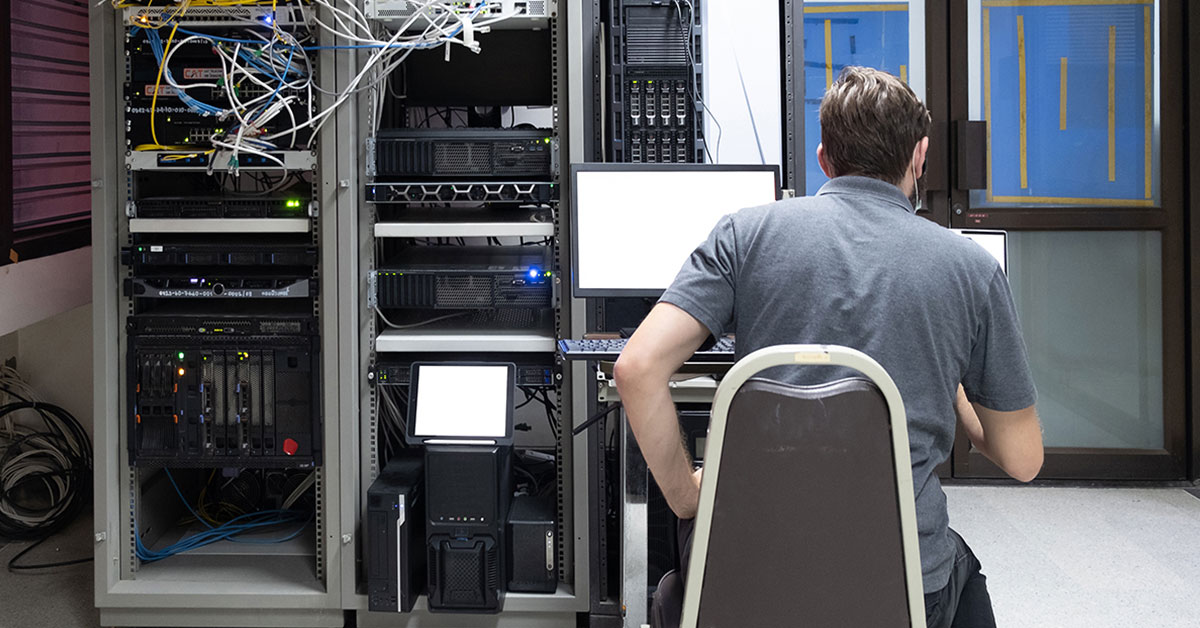Hurricane season starts every June in the United States, with companies evaluating their readiness to weather the storm if a big one hits home. Some years are fairly quiet, and others highly active. This variability presents a threat that is difficult to quantify. One of the biggest financial risks to business continuity is data loss and downtime, caused by temporary infrastructure damage. Companies who host their app, site, email or files on-premises are particularly vulnerable if physically located in Texas, Louisiana, Mississippi, Alabama, Florida, Georgia, South Carolina, North Carolina or Virginia. Reduce the possibility of catastrophe by instituting an effective three-pronged storage, back-up and disaster recovery protocol for your business.
Control, length of service, and speed are the typical cost comparison drivers
We hear numerous reasons why a business may choose to host systems on-premises, but usually the key one is control. In other words, leaders have a desire to have immediate administrative access to file servers, email servers, or other server infrastructure within the building.
As a practical manner, the build-out for systems like these is more expensive up-front, but less expensive over the long term because of the sunk costs. Therefore, the first question to ask is what will be the length of service? The answer to this question will set the foundation for a cost-benefit comparison of on-premises hosting versus cloud hosting.
The next consideration is usage. Speed is typically higher on a local network than a data center. So for businesses that pass or share large files between lots of users within the same facility, on-premises hosting can keep data flowing smoothly. However, we’ve seen the significance of that benefit start to trend downwards, as the broadband connection size from businesses to external hosts increases.
It all depends on the cost of that large connection (internally or externally) as it relates to needed connection speed. As a result, many companies host their active directory domain controller along with printer queues and user access on-premises, but they keep the file server and remote desktop server off-site with a cloud provider. To determine which is a better fit, we recommend completing a cost comparison analysis that includes what happens if a hurricane hits the on-premises location.
If the worst happens and a hurricane does hit your on-premises server location
There is careful planning that goes into building out an on-premises server location at your facility. Key investment items include:
- Back-ups. It’s best practice to have onsite and offsite back-ups. These allow you to maintain an ongoing copy of your data, in case there is a data corruption event, hardware failure event, or other stoppage. Typically, onsite back-ups run daily for ease of restoration, and offsite back-ups run biweekly for system roll-backs. In your cost comparison analysis, be sure to document what is the cost for losing all of your data because of a storm. And remember that although you may have a back-up, when a storm hits and a server goes down, you need to have another system for the back-up to be restored. Otherwise, you just have data backed up safely but nowhere for it to go.
- With a server (or servers) running 24 hours a day, heat can build up quickly within the facility. As a result, it’s important to have correctly installed, maintained and operating air conditioning installed to keep computer components from overheating. This is an investment that may also be compromised if a storm hits, so be sure to factor the cost of replacement in your analysis.
- Uninterruptable power. On-premises servers can’t keep email, files or websites running without power. Therefore, when a storm hits and power is interrupted, you need to have a phased shutdown so that there isn’t immediate data loss. Also, if the storm brings wind damage or flooding, this is another investment item that will likely need to be replaced.
The last question to ask if you are favoring on-premises hosting, which is unrelated to storms, is what happens if your systems start running out of resources (CPU, RAM, Storage)? Limited scalability is really the number one challenge to this hosting approach, so you want to have a clear idea of what the investment will be next, once you have run out of processing power, memory, or storage availability.

Choosing whether to move on-premises data to a cloud host and avoid data loss from a hurricane
If designed correctly, a cloud host approach has very few technical shortcomings. For one thing, there is hardened infrastructure which means the datacenter has established facility protection in the event of storms or other data loss events. This might include multiple direct power supply distributions from the electric company, plus a series of generators that can run for days if those distributions are temporarily disconnected. It includes redundant uninterruptible power supplies (UPS) to bridge the gaps between regular power being disconnected, and then restored to a temporary source like generators. And it likely has double- or triple-redundant HVAC, which is specified for all of the equipment that is running at any given time.
Although there is also a possibility for a storm to hit a data center, they are geographically positioned in places less likely to incur major impacts. These data centers may even have multiple internet providers connected, so that if one company goes down, the transmissions to and from can immediately be shifted, providing less worry for downtime. Maintaining service availability is truly the largest benefit for companies to host their systems remotely, but there is one more.
Size flexibility is the key way that data centers are incremental. They can host a little or a lot of your systems, instead of being locked into one on-premises solution. This means that if you need a location to restore to after a hurricane, it is easy to do. Or if your performance is lagging because of user demand, you have an outlet to scale up without a major local investment.
The potential negatives of being with a cloud host
As mentioned at the onset, there can be a few negatives. For instance, on-premises servers can be configured and set-up exactly the way you want them and optimized to that purpose. Conversely, cloud hosts typically only offer a certain number of configurations, so there are limits to what is available. Additionally, the low investment requirement means that you will be paying a subscription on an ongoing, likely permanent basis, which can add up to be more based on the length of service. Here are some additional things that can cause problems, if the remote host isn’t set-up properly:
- Customers might say they don’t know where their data is. With an on-premises host, you can literally look at the system in the server room and see where the data is stored. That can’t be done with a remote location, although many providers can tell you what data center in which they think your data is stored.
- With some services like Microsoft 365, there isn’t guaranteed recoverability. This creates an urgency for back-ups, just as much as if you were hosting on-premises.
- Because you aren’t the only customer for a data center, there is less control with the cloud. You have to contact the host and work with their team instead of your own, amongst the other customers the data center is serving. This can mean limited availability, especially if a disaster hits the data center, because the provider’s help phone lines will likely be overloaded with concerns by all the other businesses they are working with.
- You also need to have solid internet service to host remotely, because no or slow connections equals data flow problems back and forth.

Before, during and after a hurricane
If you are in Florida and a storm’s coming, here is what to do next. If your systems are hosted in a data center, it’s a bit easier. Simply implement remote policies, then transition employees to working out from new internet connections than the in-office ones, like from home. Cloud services are accessible from anywhere they have a connection.
For on-premises hosting, it’s more involved. You should also implement a business continuity plan, but then picture yourself doing these things:
- Unplugging and loading up your server in your vehicle when you leave the facility
- Hoping that isn’t damaged in transit
- Also grabbing your back-up if you have it onsite, and if it is mobile
- Again, trying to make sure it isn’t damaged or jostled in the process of the move
- Taking everything where you are going
- Connecting it back up, and testing to make sure it is working
- Keeping the HVAC running and your internet connection there up so that everyone can keep working
If that seems daunting, it certainly can be – but not impossible. It just requires you to be well organized and have a plan in place. Like any other emergency drill, we also recommend doing periodic rehearsals so that the plan activation can be simulated.
On-premises disaster recovery recommendations
Consider replicating your on-premises systems to the cloud as a first step. That way you can move everything from here to there during server maintenance. It can also provide some value for testing the on/off capabilities of your provider. If your business endures a hurricane, you are assured that it can be flipped to the cloud host temporarily, then flipped right back to on-premises once the storm has passed and services are restored.
One option is Microsoft Azure site recovery. It provides replication and readiness for when you need it. It can be utilized as a temporary or an ongoing solution, to best fit the needs and budget of your business.
Also, compare the cost for ongoing Azure offsite back-ups versus other providers. This solution creates offsite back-ups to the cloud, which can be restored to either a physical server or one in a data center cloud.
Other items to consider when determining whether to host on-premises or in a data center with a cloud provider
Whether you are planning to host with DiscoverTec or another company, there are two final decisions to make before moving forward. They are your RTO and RPO:
Recovery time objective (RTO). This is how long you want recovery to take. Essentially, from the time a system goes down, to the time the system is restored, what is the maximum time duration that should pass (in minutes, hours, days, or weeks)?
Recovery point objective (RPO). This is how close you want your recovery to be to the live data. Do you need back-ups on a minute-by-minute basis, an hour-by-hour basis, a daily basis, or even longer? The key thing to consider here is how often significant changes occur, and how many users are making those changes at any given time.
Conclusion
You should implement a disaster recovery plan that makes sense for your business. By maintaining the right cadence, size and location of back-ups, with an underlying method for restoration, you increase your likelihood of mitigating risks to hosting either on-premises or in a data center. And if a hurricane storm strikes your area and causes operational stoppage, this makes a speedy recovery possible. For additional information about on-premises versus remote hosting, or to discuss a hybrid approach with our team, please contact us today to schedule a call.